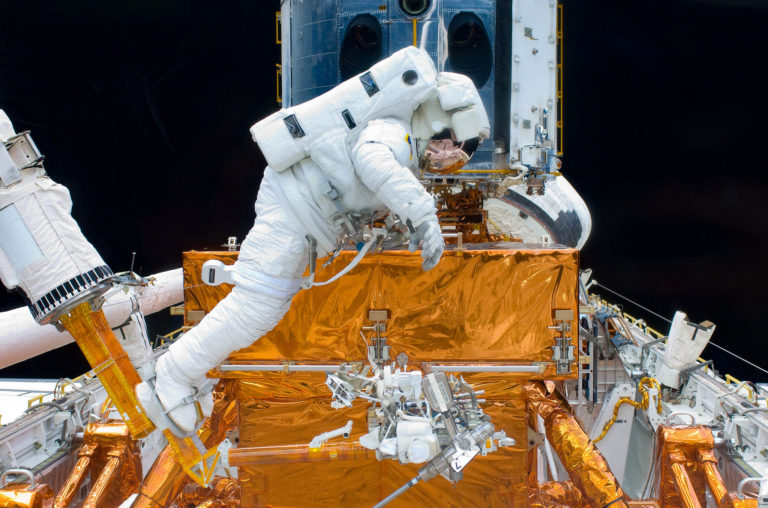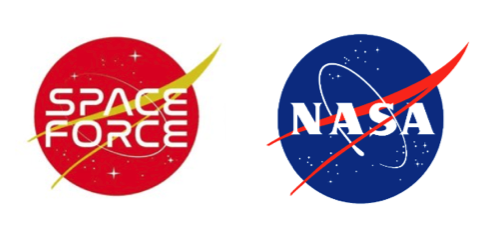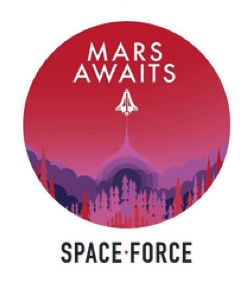Bad Idea: Conflating the Space Force with NASA

When President Trump first publicly floated the idea of creating a Space Force in March 2018, the news media and late-night comedians couldn’t help but have some fun with it. Trump himself seemed to say that he wasn’t really serious when he first thought of the idea, but then decided it was a great idea. He said a Space Force was needed because of all the private money being invested in commercial space companies, and he specifically referenced the SpaceX Falcon Heavy inaugural launch that had taken place just a month earlier (which did not include a military payload of any kind). He then went on to say, “From the very beginning, many of our astronauts have been soldiers and airmen, Coast Guard men and Marines. And our service members will be vital to ensuring America continues to lead the way into the stars.” Besides taking a swipe at Navy astronauts by neglecting to mention sailors, statements like this seem to confuse human spaceflight (which has always been the domain of NASA) with the Space Force and national security space. Conflating the two is bad for national security and bad for NASA.
While it is true that many U.S. astronauts have come from the military–John Glenn was the first Marine in space–they were on loan from the military to NASA and did not continue to play a role in the military while serving as astronauts. But the United States wisely made a point of separating space exploration and human spaceflight from national security space decades ago for good reasons. NASA’s focus is on science and pioneering “the future in space exploration, scientific discovery and aeronautics research.”[1] That mission is often best pursued by collaborating with researchers in other nations because science and exploration benefit all of humanity, not just Americans. National security space, whether it be the existing military services or a new Space Force, is focused on developing, operating, and defending military space systems to support the national security interests of the United States and its allies. To be clear, the Trump administration is not actually proposing that NASA be merged into the Space Force, but the rhetoric has at times suggested otherwise.
The announcement of the Space Force was an opportunity to educate the public about an important, and frequently misunderstood, component of national security. Instead, senior leaders are squandering this opportunity, allowing NASA’s 60-year reputation to be muddled, along with the future reputation and purpose of the Space Force. Senior administration officials, organizations associated with the Trump administration, prominent members of the science community, and the press have blurred the lines between NASA and the Space Force repeatedly in public statements and articles, leading to general public confusion on the issue.
So when have these incidents occurred and what is so troublesome about the narrative?
On August 9, 2018, Vice President Pence gave an official statement declaring the Trump administration’s intention to establish a new military department, the Space Force. That same day, the Trump 2020 reelection campaign sent out an email to campaign donors with unofficial branding options for a Space Force “logo.” Campaign donors could vote on which logo they liked best.

Many of these designs are similar to the official NASA logo. One option, pictured here, was an almost-identical red-colored version of the NASA “meatball” logo. Further confusing the narrative, another proposed logo was inscribed with “Mars Awaits,” which seemed to imply the Space Force was going to conquer Mars. Space exploration is a civil endeavor in this country, run entirely by NASA. Linking space exploration to the Space Force confuses the narrative and misleads the public about the purpose of the Space Force.
At a rally in Duluth, Minnesota, in October 2018, President Trump stated: “I think you saw the other day… we’re reopening NASA. We’re going to be… going to be… going to space…” Following this statement, attendees began to repeatedly chant “Space Force.” Instead of clearing up the organizational differences between NASA and the proposed Space Force, President Trump went on to speak about how he is establishing the new military department. A rally would have been an ideal platform to educate Americans on the administration’s policy efforts in national security space.
At an event hosted by the Washington Post, also in October 2018, Vice President Pence further muddied the waters on the purpose and activities of the Space Force by saying, “making sure that we have the security in space to advance human space exploration is the underpinning of the Space Force.” In the same interview, Vice President Pence also indicated that the president believes the Space Force will play a large role in “reinvigorating American leadership in space … and once again lead in human exploration.” Human space exploration, which is foremost clearly a NASA-led endeavor, is also one of the most internationally-collaborative missions that NASA carries out. As a case in point, since 2011 U.S. astronauts have only been able to get to space on Russian made and operated Soyuz rockets. While the U.S.-Russian relationship has dipped to new lows here on Earth, our cooperation in human spaceflight has continued without pause.
Jim Bridenstine, the current NASA administrator, has been a lead supporter within the Trump administration for the creation of a Space Force within the military. Prior to being named NASA administrator, Bridenstine supported the creation of a Space Corps as a member of the House Armed Services Committee. However, unlike the president and vice president, Administrator Bridenstine often caveats his support of the Space Force with statements clarifying that NASA will remain independent from any military space organization and that, “We want to be an agency that maintains its independence from those capabilities.”
Famed astrophysicist Neil DeGrasse Tyson has also made several public statements supporting the Space Force. However, like many, Dr. DeGrasse Tyson seems misinformed on what the proposal for the Space Force really is: simply a bureaucratic reorganization within the military. No new missions are currently planned, certainly not the ones that Dr. DeGrasse Tyson suggests: defense against asteroids and orbital debris cleanup. While orbital debris cleanup is a serious issue, it is also a major international undertaking because the threat that debris poses affects all satellites in orbit no matter their country of origin. The Space Force would help defend U.S. and allied space systems from the hostile acts of other nations–not defend the Earth from asteroids or patrol the heavens for space debris.
Americans are rightly confused on what the roles and missions of a Space Force would be. As a space policy analyst, I have been asked by friends, family, and co-workers what will happen to NASA once a Space Force is stood up. Taking the time to educate the public on the issues and the distinction between civil and national security space is crucial for public engagement on this important debate. Articles by popular news sources with headlines like “Would Trump’s “Space Force” Patrol the Moon?” continue to spread misleading information. It is also clear from interviews such as those conducted by Trevor Noah’s The Daily Show that average Americans are woefully under informed on a serious national security issue that could cost billions of dollars for the Department of Defense.
Perhaps the administration is trying to leverage NASA’s long-standing reputation and general public approval into support for the Space Force. Or perhaps the speech writers or senior leaders themselves do not fully understand the distinction between NASA and national security space. Regardless, this was a squandered opportunity for American leaders to reinforce the difference between the two and articulate why both national security space and civil space activities are important for the United States.
There are plenty of reasons to keep civil space missions completely separate from military operations that a Space Force would conduct, but key among them is the value of NASA’s international partnerships. Even at the height of the Cold War, NASA led U.S. government efforts to cooperate with the Soviet Union. In 1975, an Apollo capsule docked with a Soyuz capsule on orbit, resulting in a handshake between astronauts and cosmonauts in space. This mission required extensive communication of capabilities, locations, and technical interfaces in order to be a success. But this is the virtue of science–it transcends national boundaries and relies on cooperation and verification amongst the scientific community.
Conflating NASA’s mission with that of the Space Force can harm this important area of international collaboration and space diplomacy. Some of NASA’s partners may be more reluctant to collaborate if they perceive that NASA is part of the military or somehow associated with the Space Force. Key ongoing projects and past successes, such as the International Space Station, may not be possible in the future if the international reputation of NASA is tarnished by careless or imprecise comments made by senior leaders in the United States. Moreover, international partners are key to realizing this administration’s vision for lunar exploration because NASA’s investment in the Lunar Gateway project is insufficient on its own.
As the administration moves forward with establishing a new military service focused on space, leaders should keep their language clear and use this opportunity to educate the public about both civil and national security space. Keeping NASA and the Space Force separate rhetorically and organizationally is best for national security and for space exploration.
[1] https://www.nasa.gov/careers/our-mission-and-values

